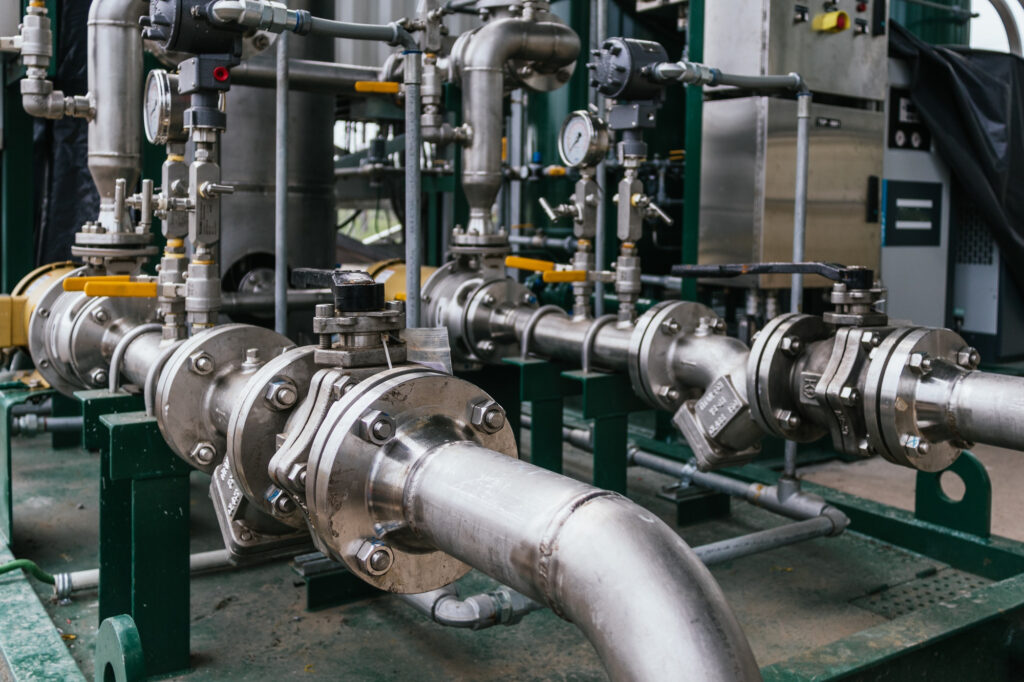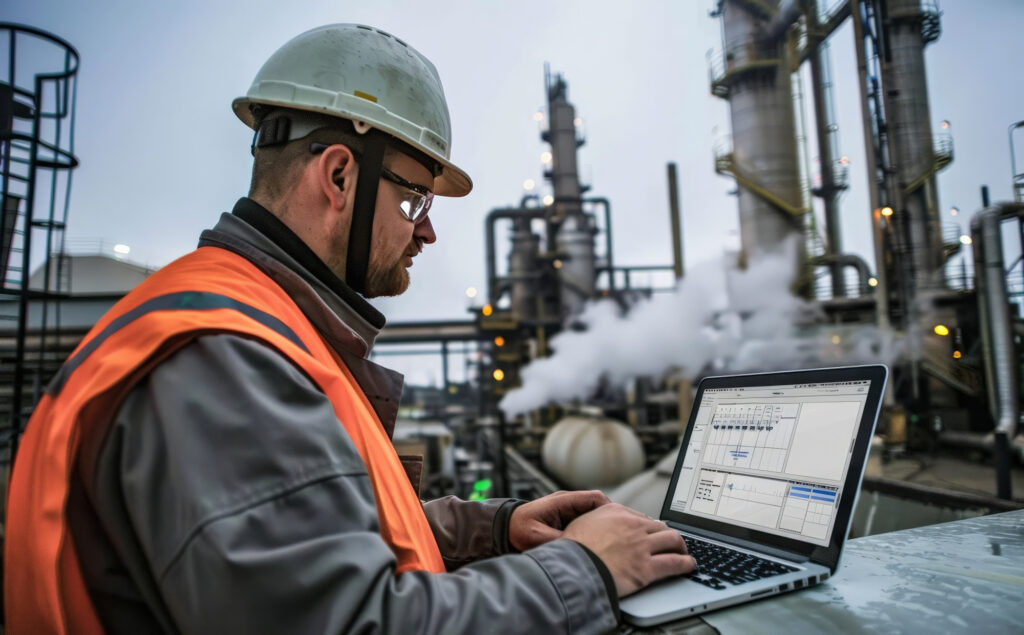The oil and gas industry is one of the most critical sectors globally, providing energy for transportation, heating, electricity generation, and a plethora of industrial processes. However, this sector faces significant challenges, particularly concerning equipment maintenance and efficiency. Traditional maintenance strategies—often based on time schedules or reactive measures—can lead to substantial downtime, increased costs, and, ultimately, safety risks. Enter the Internet of Things (IoT) and predictive analytics: transformative technologies that are redefining maintenance practices in the industry.
The Need for Transformation
The oil and gas industry operates in extreme environments where equipment and machinery are subject to wear and tear. Traditional maintenance practices, which may involve scheduled inspections and repairs, often lead to inefficient downtimes. According to a report by the International Oil and Gas Producers Association, unplanned outages can cost companies millions of dollars. Furthermore, as the sector deals with aging infrastructure, the need for innovative solutions has never been more pressing.
The market is pushing for companies to evolve. The International Energy Agency (IEA) has highlighted the importance of adopting digital technologies to improve efficiency. This is where IoT and predictive analytics step in, enabling operators to monitor equipment in real-time, predict failures before they occur, and ultimately enhance operational efficiency.
The Role of IoT and Predictive Analytics in Oil and Gas Management

The Internet of Things (IoT) consists of interconnected devices that communicate and share data, playing a crucial role in the oil and gas industry. By utilizing strategically placed sensors in machinery and pipelines, IoT continuously collects data on key parameters such as temperature, pressure, and flow rates, reflecting equipment health. This data is transmitted to cloud platforms for analysis, enabling predictive analytics that inform maintenance strategies and enhance reliability, minimizing downtime.
Beyond data collection, advanced analytics driven by artificial intelligence (AI) and machine learning help identify patterns and trends in operational data. This capability not only forecasts equipment failures but also optimizes efficiency by adjusting processes based on real-time insights. For instance, real-time pipeline monitoring can quickly detect leaks, minimizing environmental risks and ensuring regulatory compliance.
The IoT ecosystem also encourages collaboration across the oil and gas sectors, fostering a culture of transparency and innovation. Sharing data insights among upstream, midstream, and downstream operations provides a comprehensive view that drives operational excellence and sustainability.
Moreover, IoT enhances environmental performance by enabling companies to monitor emissions and resource usage, aiding compliance with regulations and promoting better stewardship. In addition to operational benefits, IoT supports supply chain management by tracking materials and logistics effectively, ensuring smooth operations and allowing real-time inventory adjustments to prevent costly overruns.
Integrating IoT with emerging technologies like blockchain can further strengthen data security and traceability, enhancing supply chain solutions and building stakeholder trust. Overall, the potential advantages of IoT in the oil and gas industry—such as predictive maintenance, operational efficiency, environmental compliance, and supply chain optimization—position companies to thrive in a rapidly evolving marketplace while embracing sustainability.
Synergistic Benefits of IoT and Predictive Analytics in Maintenance

Predictive analytics involves using statistical algorithms and machine learning techniques to identify the likelihood of future outcomes based on historical data. In the context of oil and gas maintenance, predictive analytics can analyze the vast amounts of data generated by IoT devices to forecast equipment failures and maintenance needs. By leveraging this technology, organizations can transition from traditional, reactive maintenance approaches to more proactive and efficient strategies.
Real-Time Monitoring and Failure Prediction
The integration of IoT with predictive analytics enables continuous equipment monitoring, allowing organizations to not only detect performance issues in real-time but also anticipate potential failures. This dual approach minimizes disruptive downtime and extends the lifespan of critical machinery.
Data-Driven Insights for Resource Optimization
By analyzing data from IoT devices, organizations can identify patterns that inform resource allocation, ensuring equipment, tools, and personnel are utilized efficiently. This optimization reduces waste and enhances overall productivity, allowing maintenance teams to focus on primary responsibilities without being sidetracked by unexpected failures.
Enhanced Planning for Safe and Efficient Operations
Predictive analytics provides long-term insights into equipment trends and failure patterns, facilitating the development of comprehensive maintenance schedules. When combined with real-time monitoring from IoT, this strategic planning helps organizations procure necessary parts timely and address safety hazards before they escalate into accidents, fostering a safer working environment.
Performance Improvement and Cost Reduction
Continuous monitoring of equipment performance through IoT, coupled with predictive insights, allows for process optimization that enhances both operational efficiency and production rates. Proactive maintenance practices can lead to substantial cost savings by addressing issues before they become major problems and planning maintenance during non-peak operations to minimize expenses.
Integration with Advanced Technologies for Enhanced Decision-Making
The effectiveness of IoT and predictive analytics is amplified when paired with advanced technologies such as AI. Real-time data collected from IoT sensors can be analyzed to support informed decision-making that aligns with organizational goals, driving overall performance and profitability.
Benchmarking and Continuous Improvement for Customer Satisfaction
By leveraging historical performance data, organizations can establish benchmarks that measure improvements over time. The robust analysis provided by predictive analytics ensures that maintenance strategies are effective, ultimately leading to improved service delivery and higher customer satisfaction through minimized equipment downtime and consistent product quality.
Scalable Solutions for Future Growth
The modular nature of IoT systems and the adaptability of predictive analytics allow organizations to scale their maintenance solutions as they grow. This scalability ensures that maintenance practices evolve alongside organizational needs, enabling sustained efficiency and enhanced operational performance in the long run.
Predictive analytics represents a transformative approach to maintenance in the oil and gas industry. By leveraging data and advanced analytical techniques, companies can optimize their maintenance strategies, reduce costs, improve safety, and enhance overall operational efficiency. The shift towards predictive maintenance not only provides immediate benefits but also positions organizations for sustained success in a competitive marketplace.
To better understanding of importance of using IoT and Predictive maintenance in oil & Gas industry, in this section, we will explore a real-life case study of failure and its corresponding solution
Compressor Failure in an Offshore Oil Platform
Scenario:
On an offshore oil platform in the North Sea, a centrifugal gas compressor is critical for maintaining optimal production levels. Over the years, maintenance has typically been reactive—waiting for failures to occur before performing repairs. This strategy has led to unplanned outages, increased operational costs, and safety risks.
In this case, the compressor starts to show signs of irregular vibration levels, which go unnoticed due to a lack of real-time monitoring. Subsequently, a seal fails, leading to gas leaks and a significant operational shutdown.
Sequence of Events Leading to Failure:
Traditional Monitoring Approach:
Equipment is monitored via scheduled inspections every few weeks.
Vibration analysis is conducted periodically but lacks real-time data.
Maintenance team relies solely on historical data without considering operational changes or worn-out parts.
Failure Occurrence:
Unexpected fluctuations in vibration signal the deterioration of the compressor seals.
A critical component fails, resulting in gas leakage and necessitating an emergency shutdown.
Consequences:
Unplanned downtime costs the organization millions of dollars in lost production.
Increased safety risks for personnel and the environment.
The brand’s reputation suffers due to the environmental impact of the leak.
Proactive Action through Predictive Maintenance (PdM):
Implementation of IoT and Predictive Analytics:
IoT Sensors Installation:
Deploy IoT sensors to the compressor that continuously gather data on vibration, temperature, pressure, and operational conditions.
Sensors are connected to a centralized cloud platform that enables real-time data monitoring.
Data Analytics:
Use predictive analytics software to analyze the collected data. Machine learning algorithms are employed to identify patterns indicative of potential failures.
Real-time monitoring dashboards provide insights to operators and maintenance crews.
Predictive Maintenance Alerts:
Establish thresholds for vibration and temperature that trigger alerts if readings exceed normal limits.
Predictive algorithms analyze historical performance data against current data to forecast remaining useful life (RUL) of components.
Scheduled Maintenance Optimization:
Use insights gained to optimize maintenance schedules based on the compressor’s actual condition rather than fixed intervals.
Schedule repairs during planned shutdowns rather than reacting to breakdowns.
Continuous Improvement:
Post-incident analysis is conducted to refine the predictive models and improve the algorithms based on the latest failure data.
Foster a culture of continuous improvement through training and developing maintenance personnel on new technologies.
Resulting Benefits
Reduced Unplanned Downtime:
The oil platform sees a considerable reduction in equipment failure rates and unplanned outages.
Cost Savings:
Maintenance costs decrease due to reduced emergency repairs and streamlined maintenance schedules.
Enhanced Safety and Compliance:
Predictive insights lead to improved safety protocols and compliance with environmental regulations.
Increased Production Efficiency:
Enhanced operational efficiency results in higher production rates and associated revenue.

Conclusion
The integration of IoT and predictive analytics is transforming maintenance in the oil and gas industry, moving away from traditional reactive practices to proactive, data-driven approaches. Companies like Shell are leading the way, demonstrating the tangible benefits of these technologies in terms of efficiency, cost savings, and safety.
As the industry continues to embrace digital transformation, the future of maintenance looks promising. By harnessing the power of IoT and analytics, oil and gas companies can improve their operations, adapt to changing market demands, and ensure their ongoing competitiveness in a rapidly evolving sector.
In this exciting landscape of technological advancement, Arshon Technology emerges as a key player in providing customizable predictive maintenance solutions tailored to the specific needs of oil and gas companies. Utilizing advanced IoT and analytics, they enable real-time equipment monitoring and proactive failure prevention. Their solutions enhance asset performance understanding, helping organizations minimize downtime and costs. With Arshon Technology’s support, businesses can effectively navigate digital transformation and achieve operational excellence in a rapidly evolving industry.
In summary, the oil and gas industry stands on the brink of a technological revolution in maintenance practices. As companies adopt IoT and predictive analytics, they will not only enhance their operational efficiency but also set new benchmarks for performance across the industry. The journey may be fraught with challenges, but the rewards of innovation are worth the investment.
